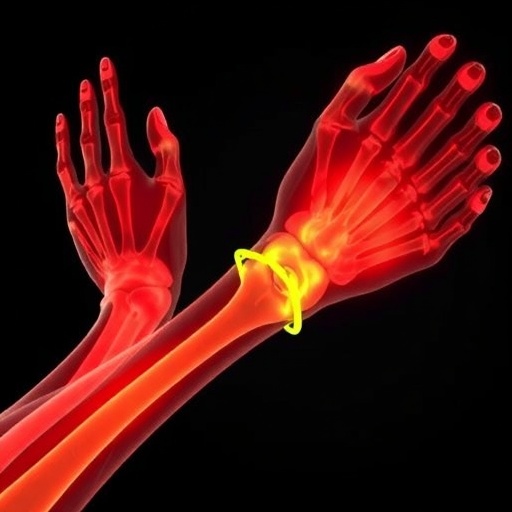
In the realm of forensic pathology, understanding the patterns and implications of injuries caused by sharp objects has long been of paramount importance. A groundbreaking study recently published in the International Journal of Legal Medicine sheds new light on the nature of sharp force injuries to the limbs, drawing from an extensive compilation of forensic autopsy data collected in Sweden over a decade. This research not only deepens our knowledge of trauma mechanisms and injury outcomes but also offers critical insights for both clinical and legal investigations, highlighting nuanced differences between fatal and nonfatal cases.
Sharp force trauma, defined by injuries inflicted through cutting or stabbing action with a sharp-edged object, poses complex challenges to forensic experts. The Swedish study meticulously analyzed hundreds of autopsies performed between 2010 and 2019, aiming to delineate patterns that differentiate fatal injuries from those that are nonfatal. Such distinctions are crucial, as they inform judicial proceedings and medical responses alike. By focusing specifically on injuries to the limbs, the research targets a common anatomical site frequently involved in defensive wounds and homicidal assaults, thus expanding on prior research largely centered on torso and head trauma.
The methodology driving this comprehensive investigation involved detailed macroscopic and microscopic examinations of limb wounds, coupled with contextual data such as circumstances of death, demographic information, and weapon type. Autopsy reports were carefully reviewed for wound depth, number, and anatomical positioning, enabling the researchers to identify objective parameters linked to survivability. Importantly, the use of contemporary imaging technologies and histological analyses afforded a more refined understanding of tissue damage, vascular involvement, and potential hemorrhagic complications leading to fatality.
.adsslot_JUCtj9w6bS{width:728px !important;height:90px !important;}
@media(max-width:1199px){ .adsslot_JUCtj9w6bS{width:468px !important;height:60px !important;}
}
@media(max-width:767px){ .adsslot_JUCtj9w6bS{width:320px !important;height:50px !important;}
}
ADVERTISEMENT
One of the most compelling revelations of the study was the distinct wound profiles that separate fatal sharp force injuries from nonfatal ones. Fatal injuries tended to display deeper penetration wounds involving major arteries or nerves within the limbs, invariably leading to rapid exsanguination or irreversible neurovascular compromise. In contrast, nonfatal wounds were generally more superficial or failed to breach critical anatomical structures, allowing victims to survive despite sustaining multiple stab or cut injuries. This finding underscores the intricate interplay between weapon dynamics, anatomical variability, and protective reflexes in determining injury outcomes.
In the context of weapon analysis, the study provided nuanced insights into the correlation between the dimensions and characteristics of the sharp instruments used and the resultant injury severity. Longer and thinner blades were more likely to penetrate vital limb structures, while broader implements tended to cause more extensive tissue laceration but with less depth. Such detailed correlations assist not only in forensic reconstructions but also carry implications for law enforcement in linking specific weapons to documented injuries.
The Swedish dataset also illuminated demographic trends tied to sharp force injuries. Males constituted a significant majority of autopsy cases, reflecting patterns of interpersonal violence and risk exposure documented globally. Age distribution revealed a higher incidence among younger adults, likely correlating with social behaviors and conflict scenarios in this demographic. The temporal span of the study further allowed for observation of any shifts in injury patterns over time, although the data suggested relative consistency in the nature and severity of limb traumas throughout the decade.
From a forensic perspective, the differentiation between homicidal, suicidal, and accidental sharp force injuries emerged as a critical aspect of the analysis. The location, depth, number of wounds, and surrounding tissue trauma were evaluated to distinguish intentional harm from self-inflicted or accidental injuries. Notably, defensive wounds on the forearms were predominantly associated with defensive postures during violent altercations, signaling attempts to shield vital body parts from attack. This forensic marker often aided in corroborating witness statements or reconstructing event sequences.
Clinically, these findings have profound implications for emergency medicine and trauma surgery. Recognition of injury patterns that portend life-threatening hemorrhage can guide rapid intervention protocols, potentially reducing mortality in sharp force trauma victims. The research advocates for heightened awareness of limb wounds that, despite a deceptive superficial appearance, may harbor hidden vascular injuries necessitating urgent surgical exploration and repair.
Moreover, the research addresses the medico-legal implications of sharp force injuries, emphasizing the need for detailed documentation during autopsies to support judicial processes. Precise characterization of wound morphology, combined with contextual data, enhances the evidentiary strength of forensic reports and aids in attributing culpability accurately. This is especially critical in ambiguous cases where the manner of death is contested or unclear.
An intriguing aspect highlighted by the study concerns the role of clothing and environmental factors in modulating injury severity. Instances where garments absorbed some of the kinetic energy of sharp weapons resulted in altered wound dimensions or reduced penetration depth. Such findings invite further inquiry into the protective qualities of clothing and the complex biomechanics of limb injuries in violent encounters.
The researchers also caution against oversimplification when interpreting sharp force injuries, advocating for a multidisciplinary approach that integrates forensic pathology, biomechanics, and clinical acumen. The variability in human anatomy and the dynamism of assault scenarios require nuanced analysis rather than reliance on rigid injury typologies alone. This comprehensive approach enhances both the accuracy and reliability of conclusions drawn from forensic examinations.
In addition to providing a robust framework for forensic investigation, this study paves the way for future research aimed at improving trauma care outcomes. By identifying critical injury features that differentiate survivable wounds from fatal ones, healthcare providers can develop targeted protocols for assessment, triage, and management in emergency settings. The collaboration between forensic scientists and trauma surgeons could thus yield translational benefits that extend well beyond the autopsy table.
The implications of this research extend into public health and violence prevention domains. Understanding the mechanisms that predispose individuals to fatal outcomes following sharp force attacks informs community safety initiatives, educational campaigns, and policy formulations aimed at reducing knife-related injuries and deaths. Such interdisciplinary translation from forensic research to societal interventions exemplifies the broader impact of this scholarly work.
Lastly, the Swedish study reaffirms the critical importance of national forensic databases and standardized autopsy protocols in generating high-quality, large-scale data sets. The consistency and comprehensiveness of data collected over a decade enabled the researchers to discern meaningful patterns that smaller or less rigorously compiled samples might obscure. This highlights an essential infrastructural component for advancing forensic medicine and legal inquiries globally.
In summary, the meticulous examination of fatal and nonfatal sharp force injuries to the limbs over a ten-year period in Sweden has provided an unprecedented window into the complex interplay of factors that determine injury outcomes. By blending anatomical precision, forensic expertise, and clinical relevance, this research not only enriches scientific understanding but also holds promise for improving trauma care, legal adjudication, and violence prevention strategies worldwide.
Subject of Research: Sharp force injuries to the limbs, forensic autopsy analysis, trauma mechanisms, injury outcomes.
Article Title: Fatal and nonfatal sharp force injuries to the limbs: a study of forensic autopsies in Sweden (2010–2019).
Article References:
Mittendorf, A.F., Högberg, N.R., Joensuu, T. et al. Fatal and nonfatal sharp force injuries to the limbs: a study of forensic autopsies in Sweden (2010–2019). Int J Legal Med (2025). https://doi.org/10.1007/s00414-025-03554-7
Image Credits: AI Generated
Tags: clinical implications of sharp force traumacomprehensive autopsy data analysisdefensive wounds analysisfatal vs nonfatal sharp injuriesforensic pathology insightshomicidal assault researchinjury patterns in forensic studieslegal investigations in forensic sciencelimb injury outcomessharp force limb injuriesSwedish autopsy studytrauma mechanisms in injuries






